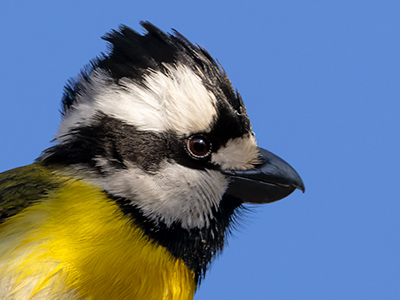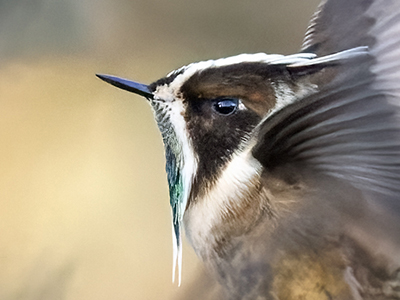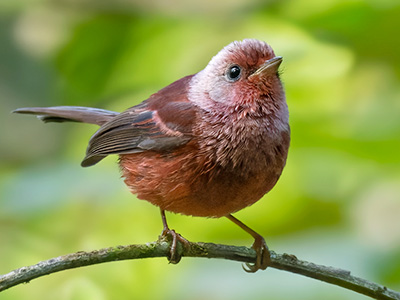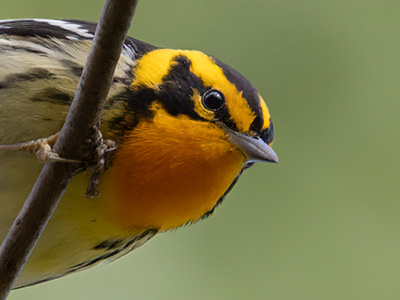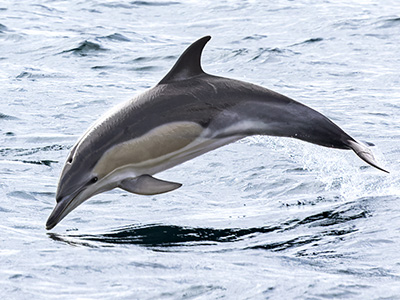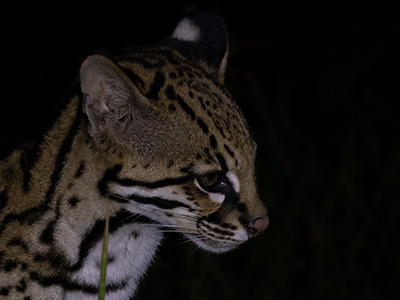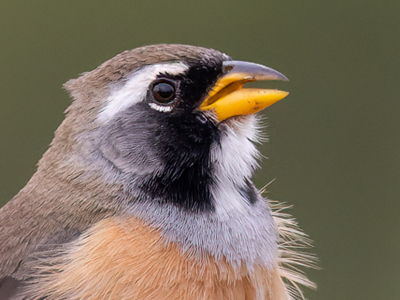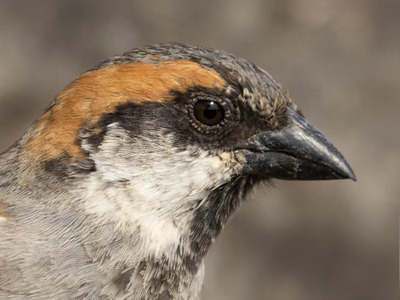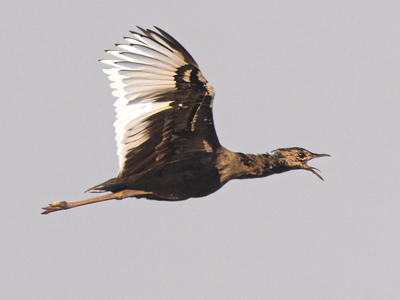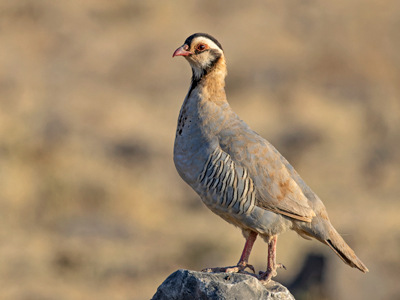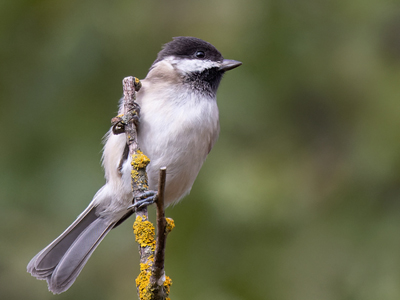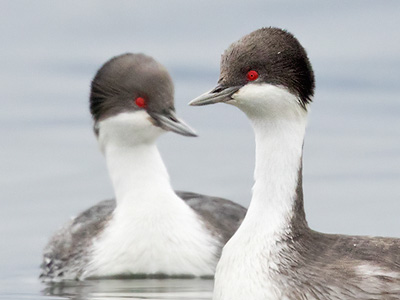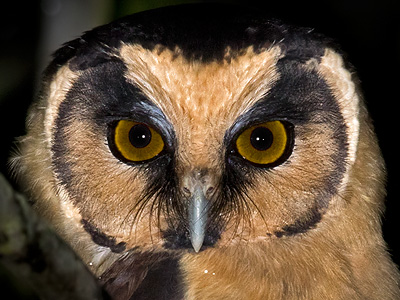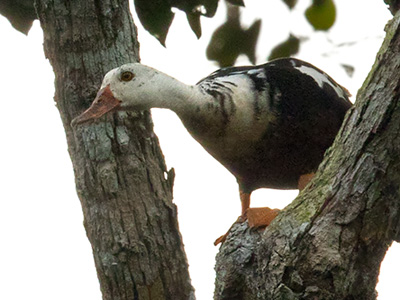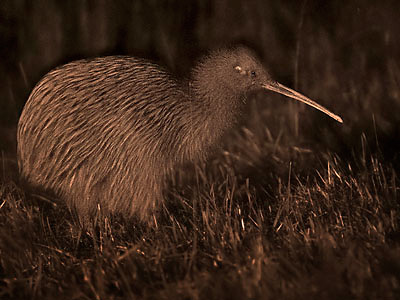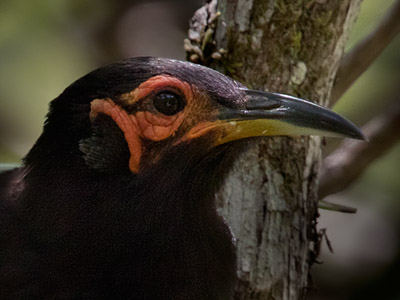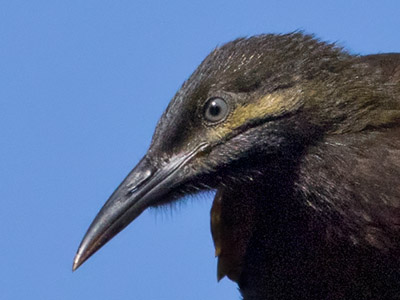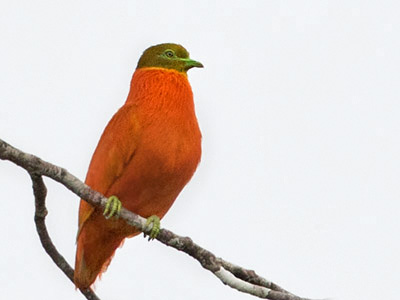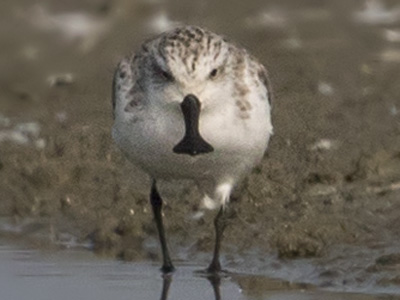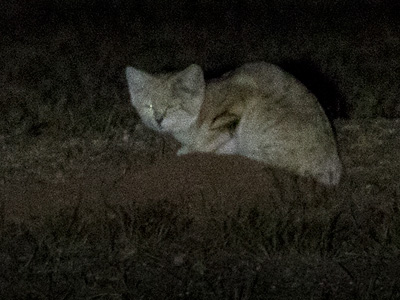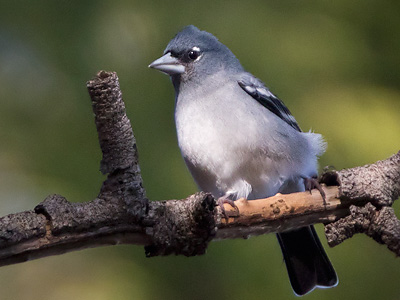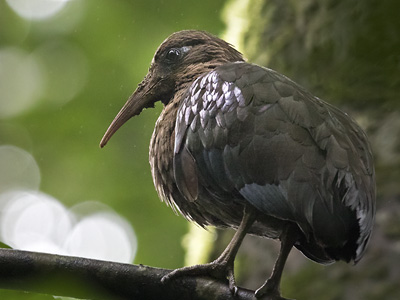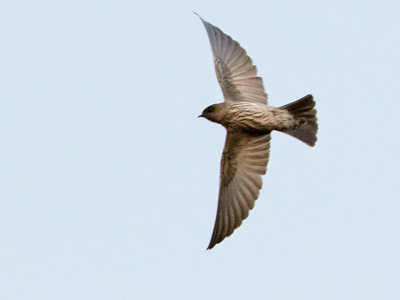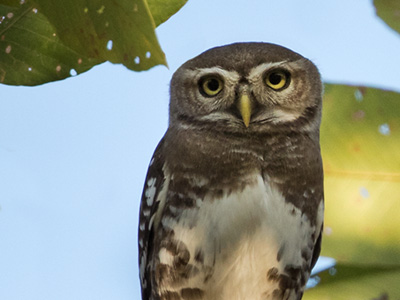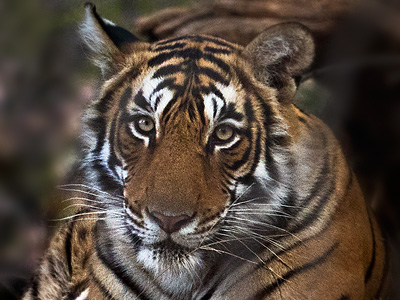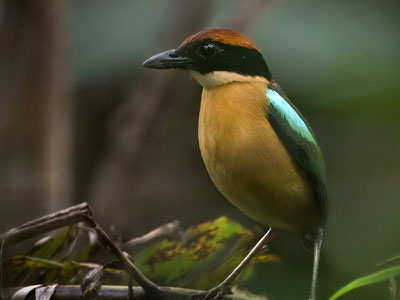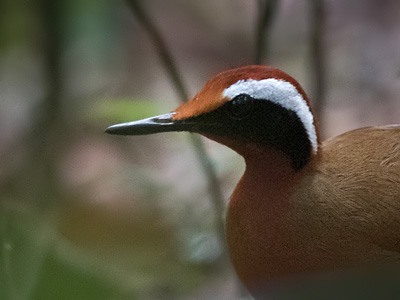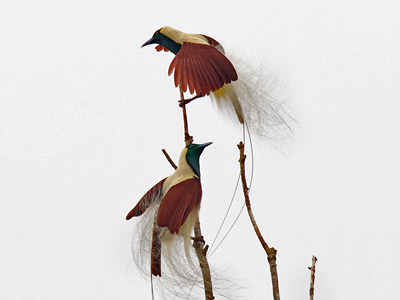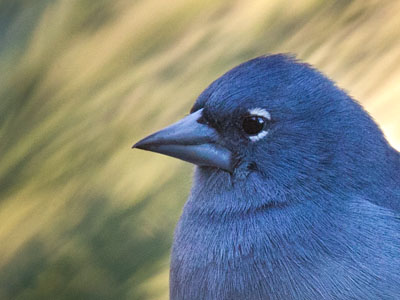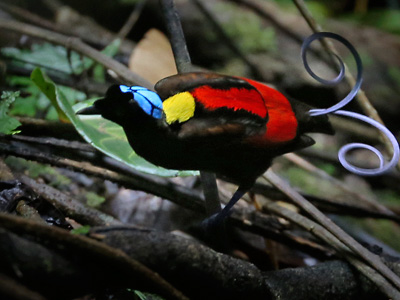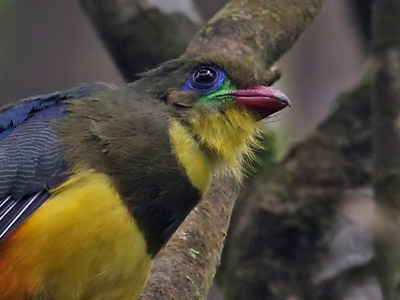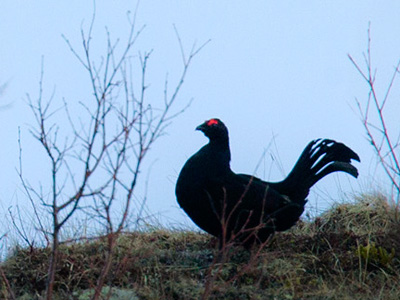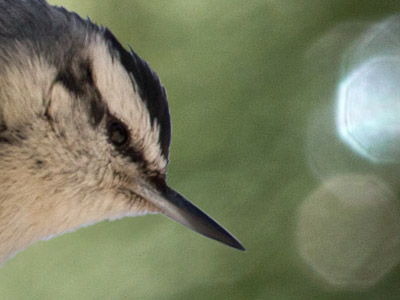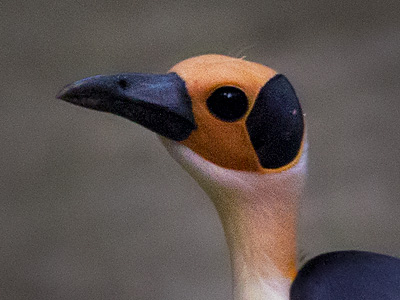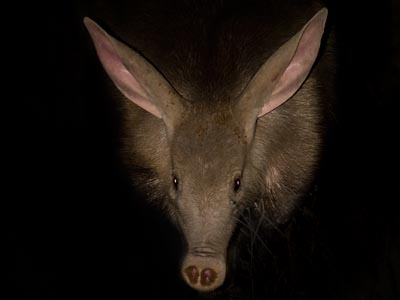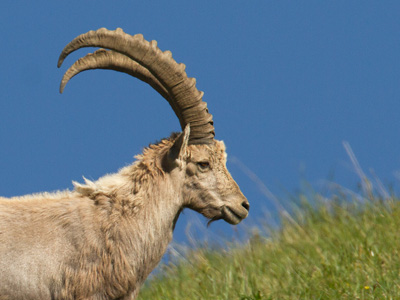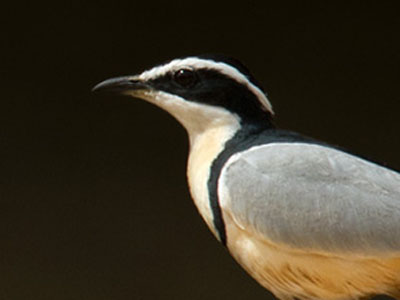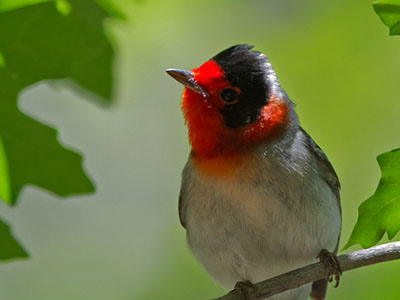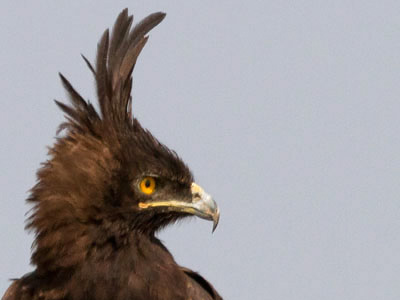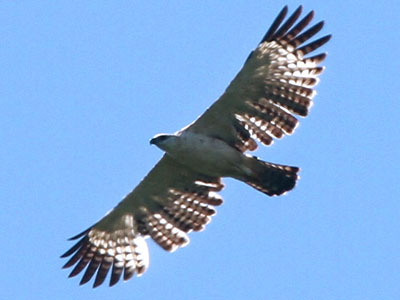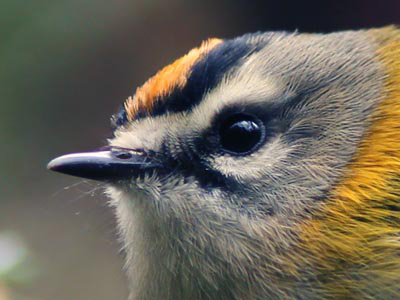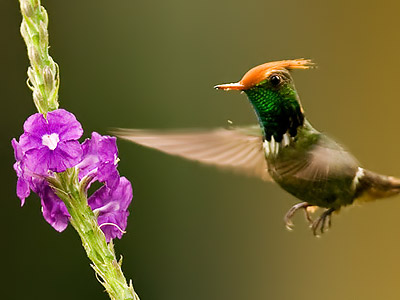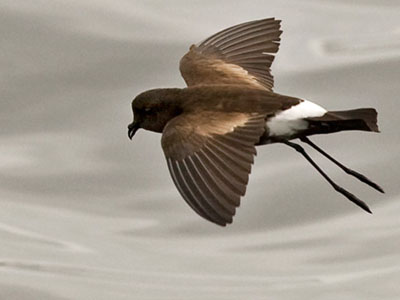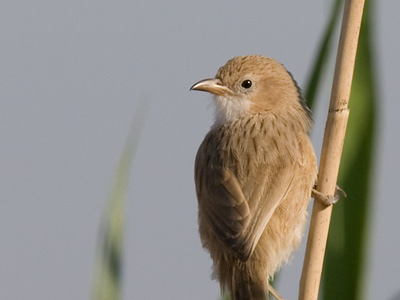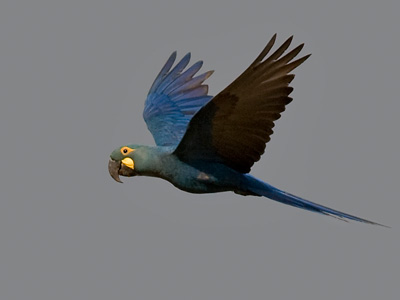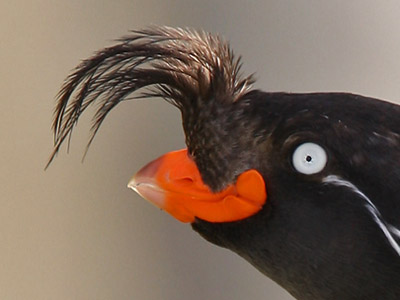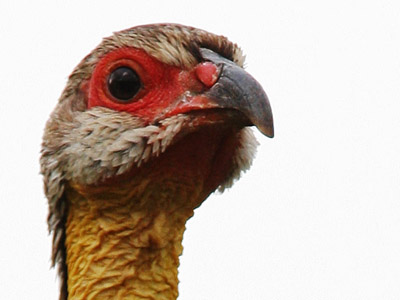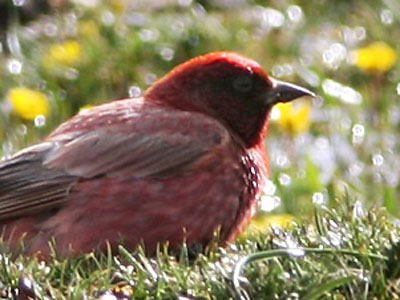Christmas Island
A brief 72 hour visit to this Indian Ocean island served as an intermission on my Western Australia trip. The two full days at my disposal were more than enough to see the natural wonders; That is five bird endemics, plus two breeding endemics that disperse in the oceans outside of breeding season. In addition to these a hawk that is not yet split, an endemic flying fox and crabs in various colors and shapes. And yes, the endemic gecko, the only native reptile that still survives but is on the verge of extinction. The first 6 photos represent some of the most desired species on the trip.
Western Australia
20 years have passed since my first and only visit to Aussieland. Back then parts of the southeast corner were covered including Tasmania. Ever since I have felt a great need to go back and explore further, and now the time had come. 4 weeks spent solo from Cape Range 1100 kms north of Perth down to the southwest corner and some red-sand outback in between. Of the current 21 WA bird endemics 18 were within reach and all were bagged, as were my most desired mammal and reptilian targets. A 4-day interlude at Christmas Island was built into my itinerary (separate gallery to come). The first 6 photos represent some of the most interesting species on the trip.
Sri Lanka
My first visit to Sri Lanka was in 1999, and I and my friends did a pretty good job in finding nearly all our bird targets. Only a short while after, the news of a new Sri Lankan owl surfaced, the discovery of Serendib Scops Owl. Ever since I have felt that I need to get back to repair the miss of the owl that we were not aware of at the time. This time I joined a team of mammalwatchers to get a more versatile experience, and I added a few days more to reconnect with the Sri Lankan birdlife, including the desired owl. The first 6 photos represent some of the most interesting species on the trip.
Colombia: Santa Marta to Bogota
The richest country in bird species on the planet, and countless corners to visit to get yet another set of new, enigmatic and seldom-seen species. This tour was designed to get most of the northern specialties as well as birds shared with neighboring Venezuela. Also the Bogota region was included. Even though I had visited many of these areas already in 1998 and 2008, a lot has happened in terms of taxonomy and sites since then. It felt like a new destination to me. The tour was organized by Ornis birding expeditions, but I am especially grateful to our local guide Juan Manuel Cardona who helped me to get on to the birds on countless occasions. The first 6 photos represent some of the most interesting species on the trip.
Guatemala
I had not been birding in Central America for more than 30 years, and never been taking any bird photos there, so indeed it was time to do something about it. For once, I made this trip mostly self-guided and in quite a short notice. In many aspects it became an arduous journey to travel solo, but in hindsight totally worth it and I can now look back to so many great wildlife encounters and memories. I took advantage of Guatemala’s excellent bird guides for five days at different locations to make sure not to miss the most critical targets. This country is a lovely birding destination and covers habitats from high altitude volcanic slopes to lush lowland rainforests. The first 6 photos represent some of the most interesting species on the trip. The rest are uploaded chronologically.
American Roadtrip
This was the 6-week journey that we always had wished for at some point in our lives. And now the time had come. Since we both have travelled several times in the states before, we now had some very specific targets that we were after. Starting in southern California in mid-April, continued north into Oregon, and then headed east across the Rockies and out onto the prairies. Ending up in the forests of Michigan and the Great Lakes where we attended the “Biggest Week in American Birding” to enjoy the warbler migration at Lake Erie. Finishing up the trip in the state of Washington and Vancouver Island. In all 320+ birds and 65 mammal species. The first 6 photos represent some of the most interesting species on the trip. The rest are uploaded chronologically.
Andalucía
A short get-away after a busy summer at home, primarily to attend a couple of whale-and-dolphin watching tours in the strait. Of course, I had a couple of bird targets to look out for too. Generally speaking, Spain seldom disappoints and this is even more true for Andalucía, even though August might not be the best month for songbirds. Being relatively close to home, where all birds are familiar, time also permits searching for other life forms as well… The first 6 photos represent some of the most interesting species on the trip. The rest are uploaded chronologically.
Bolivia
Following our 18 day mammal orientated trip in Paraguay, we continued in Bolivia for an additional 3 weeks, starting off with a 10 day guided ”Cat special tour” with Royle Safaris/Nick's Adventures. I must say that the highlight of the tour was our days in Kaa-Iya National Park, otherwise almost inaccessible and so rewarding with great views of cats and the critically endangered Chacoan Peccary. Then we went off by ourselves. I wanted to reconnect with all the birds (and more) from my visit to Bolivia in 1995. The first 6 photos represent some of the most interesting species on the trip. The rest are uploaded chronologically.
Paraguay
Mammalwatchingis a passion that is on the rise worldwide, also for us and especially for Anita who has been a keen mammalwatcher for decades. Paraguay is probably the most renowned country in South America for mammals, although relatively few birdwatchers chose to visit. But birds are here too! Logistics can be challenging though, and we were confronted with a lot of locked gates, barbed fences and impassable roads. Some hazards were also post covid-related. The first 6 photos in this gallery represent some of the most wanted or unique targets on the trip. The rest are uploaded chronologically.
Socotra and Abd al-Kuri
Socotra – The name of the island that I have been daydreaming of so many times. Dragon Blood Trees, a reptile hotspot and currently eleven endemic bird species roaming in one of the most dramatic and beautiful landscapes I have witnessed. One bird was of particular interest, the Abd al Kuri Sparrow. It inhabits the remote island that gave it its name, a days voyage from Socotra, and so far only seen by very few. Birdtour Asia organized this tour. The first 6 photos in this gallery represent some of the most wanted or unique targets on the trip. The rest are uploaded chronologically. On the last page some photos from our stopover in Abu Dhabi.
Cambodia
Cambodia is home to some of Asia's most endangered birds, so naturally a visit here has been on my bucket list for a long time. But the timing was actually an effect of a cancelled trip to China during the first months of the Covid pandemic. During our two weeks we were treated to great views of the rediscovered Giant Ibis, the recently described Mekong Wagtail and the critically endangered Bengal Florican among other great birds. Unfortunately, we couldn’t reach the last sites on the tour due to heavy rains, but Birdtour Asia / Sam Veasna Conservation Tours did a great job and are highly recommended. The first 6 photos in this gallery represent some of the most wanted or unique targets on the trip. The rest are uploaded chronologically.
Oman
In a world beaten by the seemingly forever ongoing pandemic, travelling options seemed very limited in the autumn of 2021. However, Oman looked like a safe spot, at least at time of booking the flight tickets, and also a corner of the “Greater Western Palearctic” that I had never been to. So we went, with the prospect of about 10 new lifers for me and great desert and pelagic birding. We also invested a great deal of effort in finding the recently rediscovered and mythical Omani Owl, but fell short in the end. However, we really felt its presence while we were trying. The first 6 photos in this gallery represent some of the most wanted or unique targets on the trip. The rest are uploaded chronologically.
Northern Greece
8 days in northern Greece succeeding the short visit in southern Italy. Greece has more interesting birds and we did specifically target Sombre Tit, Western Rock Nuthatch as well as the spectacular Dalmatian Pelicans at Kerkini Lake. We were a bit too early for wintering Wallcreepers, and the lilfordii White-backed Woodpecker kept out of sight although there was no shortage of other Woodpeckers. On top we encountered no less than 19 mammal species featuring Hazel and Edible Doremice. Uploading of photos in chronological order is ongoing.
Southern Italy
5 days in South Italy became my first trip abroad with my wife after Covid travel restrictions being lifted. Not so much for birds, but for a trio of mammals that has their European range restricted to Italy. We were quite successful with our mammal targets, and also managed to bag the occasional bird, lizard and butterfly etc…
Central Peru
Peru is a marvelous country for birdwatching, so even though this was my third visit, I know that I’ll return here again . The habitats in Peru are so diverse, with deserts just by the shores of the rich Pacific Ocean, Andean mountain tops above 6000 meters, glaciers, dry and wet valleys leading down to the mighty Amazon basin. More than 1800 bird species have been recorded in the country, an unbelievable number only surpassed by Colombia. On this tour we spent our efforts to the central, endemic rich parts. Although I had been to many places there before, I gained 40 new species, and many photos to my collection. Before the main tour, I and Anita spent a couple of days at Lake Junin, in pursuit for rare cats. The first 6 photos in this gallery represent some of the most wanted or unique targets on the trip. The rest are uploaded chronologically.
Northern Ecuador
We keep coming back to Ecuador, one of the best countries in the world for birders. But this time we focused a lot more on mammals. Nowadays it’s much easier to find information on how and where to find South Americas rare and elusive species. We did really well with the most important ones; the powerful Spectacled Bear, the newly described Olinguito, the odd Stump-tailed Porcupine and the enigmatic Mountain Tapir. Photo ops on most, except for the last mentioned. We also saw a good selection of targeted birds that I still needed. Thanks for valuable advice and help with planning the trip, Roger. The first 6 photos in this gallery represent some of the most wanted or unique targets on the trip. The rest are uploaded chronologically.
Java and Sumatra
Finally we got to sign up for this tour, and we didn’t hesitate to chose Birdtour Asia as the organizer and performer. As it came to be, everything didn’t ran as smoothly as we had hoped. We had terrible weather on a majority of the days, making photography and general birding difficult. The forests were covered in rain, mist and darkness. Having said that, we managed to find nearly all of our targeted birds, but did not have much time to look for the more common ones. However, nightbirding was spectacular, with 5 species of Frogmouth and 11 species of Owl etc…The first 6 photos in this gallery, represent some of the most wanted or unique targets on the trip. The rest are uploaded chronologically.
Singapore and West Malaysia
These two destinations served as both pre and post extensions to the Birdtour Asia tour to Java and Sumatra (see above). The two full days in Singapore should be enough time to find the Smooth-coated Otters, a long desired target for Anita. While looking for these charming creatures, we saw some nice birds too. A very friendly Red-legged Crake being the most memorable… We had 9 full days in Peninsular Malaysia, and we headed strait to the well known sites Fraser’s Hill, Taman Negara and Bukit Tinggi. Although I had been around here before, some new and really great stuff were sighted. How about the shy and enigmatic Asian Tapir (What An Animal!) or an unexpected Storm’s Stork or Orange-backed and Great Slaty Woodpeckers or Red-bearded Bee-eaters or Mountain Peacock-Pheasants…? The first 6 photos in this gallery, represent some of the most wanted or unique targets on the trip. The rest are uploaded chronologically.
Jordan
In recent years I and Anita have felt an increasing interest to again explore the outskirts of Western Palearctic. Even if we have traveled extensively in our home region for four decades, there are still new things to look for. In Jordan I wished for specifically Sinai Rosefinch and Nubian Nightjar, birds that have eluded me on previous trips. I also looked forward to photograph White-eyed Gull and other localized specialties. And could I even dare to dream of a Desert Owl willing to perform? We also put in a real effort on mammalwatching, mostly at night. The result from this was rather poor, although a brief view of the rare Blanford’s Fox warmed our souls in the desert night! The first 6 photos in this gallery, represent some of the most wanted or unique targets on the trip. The rest are uploaded chronologically.
New Zealand
This gallery displays photos from a tour to New Zealand in three parts! The first is from a couple of days on Chatham Island with my wife Anita. We had the Grande Finale there, highlighted by a close encounter with the endangered Taiko (Magenta Petrel) as part of our Oceanic Honeymoon… Part two is a short one; I and Jonas took the ferry from Auckland to Rangitoto Island in pursuit for Shore Dotterel and had great success. The day after that we set off on Part 3, a 21-day Wrybill Birding Tour led by Phil Hammond. The 8 of us had a great time with him as our guide and we saw just about everything possible from north to south and had 4 days of fantastic Pelagics too. The first 6 photos in this gallery, represent some of the most wanted or unique targets on the trip. The rest are uploaded chronologically. Read the trip report here, and the species checklist here.
New Caledonia
New Caledonia has for many years been on my ”bucket list” of places to go. They have a fair amount of endemic birds, about 22, plus 3 possibly extinct species. Of the possible ones, I saw all but missed the photo on two. I traveled on my own, slept in my rental Kia for 5 nights and two on the hostel in Noumea. My wife Anita, who had accompanied me to Vanuatu, Fiji and Samoa, traveled on with a friend to Tonga. She had been already to NC many years ago. The first 6 photos in this gallery, represent some of the most wanted or unique targets on the trip. The rest are uploaded chronologically. The first 6 photos in this gallery, represent some of the most wanted or unique targets on the trip. The rest are uploaded chronologically. The rest are uploaded chronologically.
Samoa
Samoa was the final destination on our Pacific Honeymoon Tour and a natural sequel to the Fiji archipelago. Samoa has 9 endemic bird species of which one (a White-eye) are confined to Savaii that we did not visit. Also the mythical Tooth-billed Pigeon ("Manumea") is an endemic, but there appear to be no confirmed record of this bird for several years, although some claim to have seen it more recently. Either way, we spent a whole day scanning for the Manumea. The first 6 photos in this gallery, represent some of the most wanted or unique targets on the trip. The rest are uploaded chronologically.
Fiji
12 days to the Fijian Archipelago followed our successful visit to Vanuatu. The country has no less than 33 endemic bird species of which 4 only exist on remote islands or are possibly extinct. That left us with 29 possible ones, but missed 3 of those. Bad luck struck us hard here, as the worst weather that I have ever experienced virtually locked us inside our accommodations on some of the islands. So, given the bad weather, we were quite happy with the 26 targets we saw by visiting Kadavu, Taveuni, Natewa Peninsula on Vanua Levu and Viti Levu. The first 6 photos in this gallery, represent some of the most wanted or unique targets on the trip. The rest are uploaded chronologically.
Vanuatu
Our days in Vanuatu was the first leg on my and Anita’s South-west Pacific Honeymoon Tour. Naturally, we wanted to see all the endemics, but this is very difficult since some of those are virtually inaccessible or have not been recorded for many years. We left out Pic Santo, a place that can be quite expencive, misserable and messy due to previous reports. In retrospect, we feel very content with that decision. We saw (7)8 out of 10 endemics at only two sites; Loru Rainforest Protected Area on Espiritu Santo and Vanua Lava in Banks Islands. Vanua Lava is a very friendly and easy-going place where one can see some of the birds that are difficult on Espiritu Santo with ease and within walking distance from the small town of Sola. The first 6 photos in this gallery, represent some of the most wanted or unique targets on the trip. The rest are uploaded chronologically.
Vietnam
This country has 13 endemic bird species and a large number of regional, Indochinese specialities. I had longing to go here for decades, and now it was finally going to happen. Most international birdtour operators has tours to Vietnam, but we decided to go with Bao Nguyen, one of the heads of Vietnamese Wildtours. We were a small group; us, three americans and a french. All had various skills and abilities in the field, but the atmosphere in the group was great, depite the fact that birding in Vietnam is challenging. In general birds are extremely shy outside the protected areas, and we had to rely a great deal on hides to get views and photos. Not really my cup of tee. So, for many reasons I felt that we ended up with a rather poor result, even if we bagged most of the top birds such as Bar-bellied Pitta, Siamese Fireback and Red-collared Woodpecker. Great stuff indeed!
Thailand - 8 days
Since we were heading for Vietnam anyway, we decided to pre-extend our journey with a short (8 days) stop over in Thailand. We both had targets here. For me, the main thing was to finally get views and photos of the enigmatic and endangered Spoon-billed Sandpiper. This fantastic bird spend the winter months here at a well known place, but only in very low numbers. For Anita the prospect of seeing some new mammals was the main goal, especially the Sun Bear. In the past one of these bears regularly showed up at the lower camp in Kaeng Krachan National Park to feed on the garbage from the restaurant. But could we really count on the bears to show up this year? Well, we both left Thailand very happy! The first 6 photos in this gallery, represent some of the most wanted or unique targets on the trip. The rest are uploaded chronologically.
Western Sahara II
This was our second visit to Western Sahara. We found the area so accessible and straightforward in terms of the logistics that allmost no planning was required to go again. Last years target like Golden Nightjar, Cricket Warbler and Sudan Golden Sparrow were already in the bag, so no time was spent searching for those this time (the latter two were hard to miss anyway). This time we needed to see Dunn’s Lark, Crowned Sandgrouse and Sand Cat. All went very well!!! As it has become a habit for us, we stayed the nights in our small rented car under the Saharan starspangled sky, and prepared our food from the water provided by our 12V waterboiler.
Gran Canaria
One can say that we got this brief visit to Gran Canaria for free, since the most affordable route to Western Sahara produced a stop-over on the island anyway. We used this opportunity to see the recently split Gran Canaria Blue Chaffinch, previously treated as a subspecies of the Tenerife birds. On Gran Canaria the birds survives in a few small pockets of pines in the mountains, and they number in a few hundreds only. This makes the Gran Canaria Blue Chaffinch the rarest and most threatened bird species in the whole Western Palearctic region. Excess time was spent with relaxed birding in the Maspalomas area.
São Tomé and Príncipe
The island nation of São Tomé and Príncipe in the Gulf of Guinea is often refered to as the Galapagos of Africa. No less than 27 endemic bird species are found here, including the "new" Scops-owl on Príncipe! That is the highest concentration of endemic bird species in the world. The Galapagos holds 21 endemics on an area 8 times larger. We managed to get all of these endemic birds in the bag, even if the Owl on Príncipe was a heard only. From our muddy campsites and during demanding walks in the wet, steep forests we saw desired birds like São Tomé Grosbeak, São Tomé Ibis, São Tomé Shorttail, São Tomé Fiscal and furthermore the Príncipe Thrush och Príncipe White-eye. As of yet there has been no photos published on the latter species, but please have a look in this gallery. You may find some there... The first 6 photos in this gallery, represent some of the most wanted or unique targets on the trip. The rest are uploaded chronologically.
Portugal
En route to São Tomé & Príncipe we had to change flights in Lisbon. Since we were putting down our feet on Portuguese soil anyway, we decided to stay a couple of days and have a look at the country. Not many birds were photographed, but the birding was very nice and may inspire us to get back here some day. On a nightdrive, I got to see Red-necked Nightjar, a species a had only heard in Spain.
Japan
In contrary to what I thought, Japan is not a complicated country to go birding by yourself. Apps and helpful people made our journey a smooth ride and we exceeded our expectations in terms of birds and mammals that we saw. The logistics; 8 car rentals, 9 ferries and 3 domestic flights were almost all booked in advance from home. Good planning are the key words, and excellent trip reports can be found on www.cloudbirders.com. In one month we covered Japan from Iriomote-jima in the south to Hokkaido in the north via the remote Bonin islands in the Pacific Ocean.
The first 6 photos in this gallery, represent some of the most wanted or unique targets on the trip. The rest are uploaded chronologically.
Taiwan
Taiwan is a modern and easy-going country for travels. The level of costs is low despite high standards in general. National parks and other sites for birding are well maintained and we never had problems to find somewhere to stay for the night. We only made one hotel reservation in advance! In the time of writing, there are 27 endemic bird species (IOC) on the island, and in addition a handful that are likely to be split in a future. We saw all of these and also some cool animals in 12 days. Then we continued for a months birding in nearby Japan.
The first 6 photos in this gallery, represent some of the most wanted or unique targets on the trip. The rest are uploaded chronologically.
Cyprus
Cyprus is easily accessible via cheap flights from the south of Sweden, but the real motivation to go there has been lacking. Many years have past since I saw the breeding endemics, Cyprus Warbler and Cyprus Wheatear on trips to the Middle East. But now, very recently due to taxonomic decisions the motivation to get to the island arrived. The local endemic subspecies of Eurasian Scops-Owl now is considered to be a unique species only present on Cyprus, the Cyprus Scops-Owl (Otus cyprius). So off we flew!
Western Sahara
Western Sahara has become a increasingly interesting destination as reports keep coming on birds and mammals not regularly seen elsewhere in the Western Palearctic. For this trip, we made our decision on a very short notice when we heard that the Golden Nightjars were present also this year. Within three weeks we were off! I really enjoyed the desert birding i north Africa, and we saw birds that I have not seen for 28 years! Due to flight logistics, we had a half days birding around Casablanca, Morocco. The first 6 photos in this gallery, represent some of the most wanted or unique targets on the trip. The rest are uploaded chronologically, starting with a few images from Morocco.
Angola
When Rockjumper Tours announced the two last spaces to this tour to a reduced price, I was not late to sign up. Angola has about a dozen endemic bird species, and several more restricted to to small ranges in southwestern Africa. We succeded very well to see most of those birds at close range, even if the photo opportunities were very challenging. Angola also experienced a crippling civil war for 30 years, and its mineral resources are now being shipped out of the country. In a three week time, we did not see a single mammal alive, bigger than a Rock Hyrax!
The first 6 photos in this gallery, represent some of the most wanted or unique targets on the trip. The rest are uploaded chronologically. See the full Rockjumper report here.
Alaska
This is the trip I have been longing for so many years to do. It almost coincided with my 50th birthday, so it was kind of a gift to myself. We planned it ourselves, me and Anita, and we were really happy with the trip in the end. Since we travelled by ourselves, we could put an extra effort in mammal watching and photography. We saw 180 bird species, more or less in par with what most tour companies produce. On top of that we got to see 32 mammal species, topped with the Polar Bears and Porcupines.
The first 6 photos in this gallery, represent some of the most wanted targets on the trip. The rest is uploaded chronologically.
Spain - Andalucia and Extremadura
We had only three distinct goals on this one-week trip; 1. Look for Iberian Lynx. 2. Find an Iberian Lynx. 3. Photograph an Iberian Lynx. We succeeded well on the first two of these goals already on our first morning at Sierra de Andújar in Andalucia. Later on that same day we got close enough, but still a little to far away (700 meters) to get some distant photos of the Lynx. Sierra de Andújar is a beautiful area, rich in wildlife and birds, so we instantly felt that we were going to revisit this area again in the future, preferable when the Lynxes are more active, in December-January. Since we got the Iberian Lynx in the bag so early on the trip, we now had the opportunity to bird other areas, like La Serena for steppe species and Sierra Nevada for alpine species. I have added a few images from an other very short trip in December 2016 at the end of this gallery.
Western India
This trip covered the states of Punjab, Gujarat, Rajasthan and Maharashtra and was arranged by James Eaton/Birdtour Asia. We had 2 very successful weeks with all target birds seen well, even though some of them were proven elusive and found in the very last minute. Star birds on the tour were Great Indian Bustard, Forest Owlet, Sykes's Nightjar, White-naped Tit, Indian Spotted Creeper, Marshall's Iora and I could easily add 20 more with "star quality". No country in the world has a bigger number of Critically Endangered bird species (16) and we saw six of those (Great Indian Bustard, Forest Owlet, White-rumped Vulture, Red-headed Vulture, Indian Vulture and Sociable Lapwing). The first 6 photos shows some of the most desired birds by me and my travel companions. Thereafter the images are uploaded chronologically. See the full Birdtour Asia report here.
Northern India
A tour along some of Indian most famous birding sites (Corbett, Ranthambore, Chambal River och Bharatpur). Oraganized by our selves.
The first 6 photos shows some of the most desired birds by me and my travel companion. Thereafter the images are uploaded chronologically.
Solomon Islands
This was probably the most adventurous, exhausting (and expensive) bird tour I have ever been part of. However, the reward was immense. These islands have a great selection of specialities and a large percentage of the birds are endemic. We managed to see several of the finest of those, including the bizarre Solomons Frogmouth, the shy Black-faced Pitta and the majestic Fearful Owl. Thanks to Mark Van Beirs for excellent guiding and well written trip report.
Panti Forest, Malaysia
We thought it was a perfect idea to extend our stopover in Singapore, en route to the Solomons, and visit nearby Panti on the Malay peninsula. We hired Con Foley (400+ visits) for three days and gave him a "shopping list" with most wanted species with the Rail-babbler as No: 1. Time and money was well spent! Con wrote a nice report on our visit. Read it here.
Majorca
Returning to this beautiful island where I started my career as a global birder was a real pleasant experience. In 1983 and again in 1985, I met for the first time the Mediterranean avifauna but off course without camera. Majorca is a treasure and has a lot to offer when it comes to birding. The Balearic Warbler is an endemic to the Balearic Islands, it is breeding grounds to the Balearic Shearwater and it is a superb place to see Eleonoras Falcons in good numbers.
Zanzibar and Pemba
The vicinity to Mombasa made us extend our Kenya tour to the two Tanzanian islands of Zanzibar and Pemba. It was only me and Anita that went, and we had some real nice adventures ahead of us. Only a couple of months earlier, I passed the final tests for diving certificate in the cold Swedish waters. Thus it was quite obvious that we scheduled for some diving on the lovely coral reefs of Zanzibar. Also, there are four endemic bird species on Pemba to be seen, and we saw them all.
Kenya
Kenya is one of those countries that one can go back to again and again and still see new things. I made my first visit here in 1990, so it was about time for my revisit. We travelled along the same route like back then, with only small differences, but despite that, I saw more than 60 new birds. We were a joyful team of six swedes, with Charles as our skillful driver and Moses Kandie as our expert guide. All mammal photos in a dedicated gallery.
Papua New Guinea - remote
I joined Birdquest and Mark Van Beirs on this trip to explored the remote islands of Manus and Tong in the Admiralties, New Ireland and Tench in the Bismarcks, the isolated Adelbert range and the fabled Huon peninsula on the northern watershed of mainland New Guinea and secluded Fergusson Island in the D’Entrecasteaux Archipelago.
Download a trip report with several of my photos here.
Canary Islands
A third visit to these Atlantic islands, but a first real attempt to capture the avian specialties on photo. We birded on Tenerife, La Palma and Fuerteventura (in that order) during a week in March. Me and Anita were successful with our intentions and had lovely encounters with the Pigeons, the Tenerife Blue Chaffinch, the Stonechat, the desert birds and a whole lot more.
Florida
A stopover in Miami on the way home from Ecuador gave us the opportunity to make a 5 hours visit to Everglades National Park. There were perhaps no sensational birds seen on this day, but it's always nice to revisit the park every now and then, lets say every 10 to 15 years.
Southern Ecuador
After 18 years, it was finally time for a return visit to one of the world's best birding countries in the company of good friends. The tour took place mainly in the South, but I and Anita added an extra week in the Pichincha province. Thanks Roger for excellent guiding.
West Papua, New Guinea
A long awaited trip to New Guinea, the western Indonesian part of the island to be more exact. Birdtour Asia launched their first trip to this destination and Jonas and I decided to go. Finally one would get to see Birds of Paradise, rare Paradise Kingfishers, Crowned Pigeons and much more. And we saw a lot, including 15 species of Birds of Paradise, although some of these were unexpectedly awkward to observe or photograph. A trip report is available here.
Western Java
Once again Jonas and I opted fore a couple of pre-tour birding days on Java (see the gallery below on Bali and eastern Java). Later we would join a Birdtours Asia group for a West Papua adventure. But since we had a stopover in Jakarta anyway, we took the chance to visit the national parks Gede Pangrango and Mount Halimun with young Jakarta birders Boas and Khaleb.
Caucasian Georgia
An unexpected tour since we aimed for Azerbaijan originally. However, the tour was cancelled and we were instead offered to join with Spatia Wildlife Tours manager to Georgia for a recce trip to Georgia. Since it was only the three of us, photographic excesses was allowed!
Sardinia & Corsica
A week-long trip to primarily Corsica, where I was on a brief visit in 1990. Now, I had the company of Anita and we started and ended the trip in Sardinia. The goal was to see as many of the islands' endemic species, both birds and other life forms.
Ghana
A relatively short and hasslefree trip to this peaceful, hospitable country in West Africa. For 12 days we traveled the southern parts of Ghana with Ashanti as our tour operator. Ashanti has skilled guides, but it is a good advice to choose your guide carefully if you are a really keen birder. The Picathartes was of course the most importent target species, and we obtained stunning views of this peculiar bird.
South Africa in winter
Most birders travel to South Africa during the austral spring and summer, from November and further on. But this fascinating country also has a lot to offer in the winter in July and August. However, in winter the weather can be extremely wet and windy in the Cape Town area. In 2012, Anita and I went on a winter tour to South Africa. Since we both had been there before on birding trips, we now made a special attempt to see some rare mammals, and the Great White Shark!
Swiss and French Alps
A short four day trip with Geneva as our starting point. We drove briskly across the border to the French side for birding in the afternoon and the next day. Then two days in Switzerland. Target species number 1 was the Rock Partridge for both of us, which we saw briefly and heard calling. The Citril Finch was also new to me as were three species of mammals. Anita also got her targets Alpine Accentor and Snowfinch.The alpine meadows were still in full bloom with some interesting orchids.
Cameroon
If you go to a country like Cameroon for birdwatching it will probably require more planning and logistical expertise than usual. Jonas, Karl-Lennart, Hans, Jan, Karin, Ludde, Krister and I engaged the South African company Rockjumper Birding Tours for this trip and David Hoddinott as our guide. David is one of the most respected ornithologists on the continent and you can download his report here.
Fabulous Runde
The first time I went to this fantastic Norweigan island was in 1994. I travelled with my old non-birding friend Magnus in my Fiesta, and it was not really a birdwatching trip. Now, 17 years later, I was back with some serious camera gear hoping to get some nice pics of the avian life on the island. I started, though, with a visit to Dovrefjell to see the wierd muskoxs that were introduced from Greenland at the beginning of the last century.
California & Arizona
If you are a birder and travel in America, you will allways have a lot to study! Whereever you go there are birdwatching sites within reach and the diversity in birds, animals and scenery is great. Although this tour was full, my friend and tour leader Samuel let me join in. Thanks! Samuel compiled a report (in Swedish) that you can read here. I birded southern California already 20 years ago, but this was my first visit to Arizona.
Ethiopia Re-Visited
On relatively short notice, I had to decide whether I wanted to join in for this trip. And of course I said yes immediately! I knew from before that Ethiopia was a wonderful country to travel in and there was still much left to experience. We were just a small group and the exciting Omo next to the Sudan border was the target.
Lesser Sunda Islands
A 17-day tour to the Indonesian islands Sumba, Timor, Flores and Komodo. These islands holds several exciting and endemic bird species. Many birds here are endengered due to deforestation and the cagebird trade. We were seven birders of four nationalities and the tour was led by James Eaton/Birdtour Asia. You can read the trip report here.
Bali and East Java
I, Jonas and Ludde desided to arrive to Bali a couple of days before the main tour to the Lesser Sundas. Simon from Canada joined in. We wanted to see the specialties of East Java and Bali. For me personally, Bali Myna and Green Peafowl were among the most wanted targets. All logistics was organised by Birdtour Asia.
Birds of Madeira
A one week holiday trip with a non-birding friend. There was no intention to see the rare seabirds on this trip. I was quite content with the land birds we saw and the occasional photo when the opportunity was given.
Birds of Southern Peru
Eight good friends spent three weeks in October-November in this mega-diverse part of the planet. We covered all altitudes from the slopes of Nevado Veronica down to damp lowland Amazonas.
Birds on a pelagic tour off Lima, Peru
This pelagic tour was the first day, October 25 2009, on our itinerary of the main Southern Peru trip (see above).
Birds of Syria
Even if proclaimed as part of “axis of evil” by someone, this country also represent a lot of hospitality, interesting history and very good birding! In six days of April 2009 we had most of the disired birds, including the Iraq Babbler and the Critically endangered Northern Bald Ibis.
Birds of north-east Brazil
A fantastic four-week trip over new-year 08/09 where everything would succeed when it comes to expected, or rather desired bird species. This area has a very large number of endangered species. Vigorous action is needed and is also made to protect the remaining fragments of forest from growing areas of cane fields. Our superb guides Ricardo Parrini and Ciro Albano knew, however, were the last birds were to be found.
Birds at Rio Javarí, Brazil
The days we spent at Rio Javarí (which forms border between Brazil and Peru) was part of the Colombia trip (see below). I put the Javarí images in its own gallery since geography and fauna differed a good deal.
Birds of Colombia
An exciting trip to central Colombia, with a lot of the endemic species seen. With a little planning and local organizers there should not be any worries about unpleasant surprises, like kidnapping and terrorist gangs. The trip ended with a short week in the along Javarí river, Amazonas. Those birds are in their own gallery.
Birds of Sea of Okhotsk, Russia
This trip to the Sea of Okhotsk in eastern Siberia (and north of Japan) was probably the most rewarding trip for a bird photographers that I have ever been on. Photo opportunities were endless.
Birds and wildlife of Ethiopia
So far there are only a few In November 2007 I travelled with a Swedish birdtour company to this high altitude and very scenic country. Not only the bird life was astonishing but also a long row of African mammal species. The two species that were among the most memorable were of course the Gelada Baboons and the Simien Wolf, both endemic to the Ethiopian highlands. A trip report in Swedish can be viewed here.
Birds of Poland
In June 2007 I took a short birding trip with my birdwatching mates to the neighboring Poland. We set off for the eastern parts and of course the famous wetlands of Biebrza and the primary forest at Bialowieza were visited. We had several encounters of species we not regularly can see at home, e.g. Middle Spotted and White-backed Woodpeckers, all three Chlidonias terns, both Spotted Eagles, Bee-eaters, Citrin Wagtails etc.
Birds of Venezuela
I and Samuel couldn't resist a journey to Venezuela when we found cheap flights to Caracas in January 2007. It was not my first visit in this country but now I carried a camera. Most of the sites were familiar to me from my first trip here in 1994. View a trip report in Swedish here.
Birds of Tibetan plateau, China
In July 2007 I travelled with a Swedish birdtour company to the Chinese high altitude province Qinghai, known by many for the huge lake Koko-Nor. But there is also large areas of high mountains, vaste steppes and primary coniferous forests. It was my first trip I photographed with a digital SLR equipment.
One can view a trip report in Swedish here.

